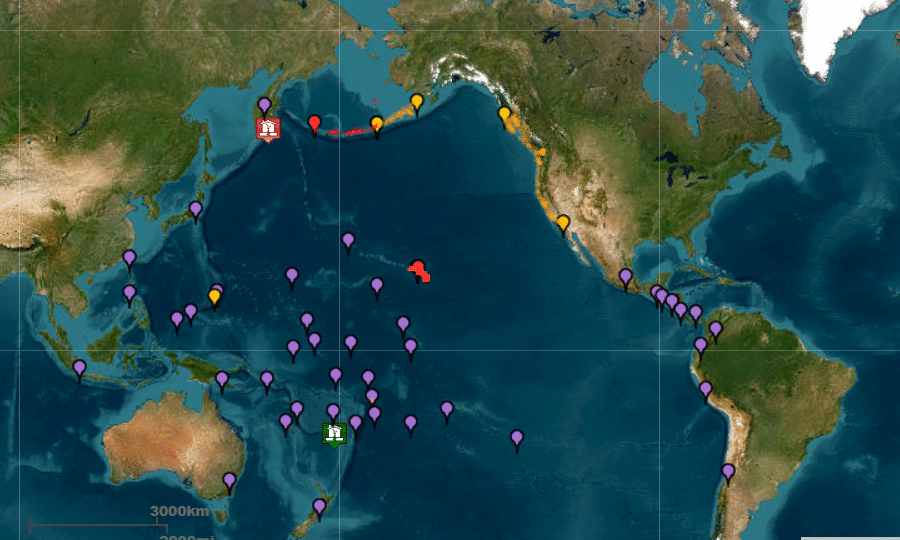Tsunami waves have now impacted the US state of Hawaii, the Pacific Tsunami Warning Center says.
The Hanelei gauge recorded the highest wave was nearly 1 metre relative to normal sea level.
Experts are feeling cautiously optimistic, saying that although tsunami activity is definitely present, the waves have not reached catastrophic levels. So far no one has died as a result of the tsunami waves in Hawai’i.
However people are warned to still be cautious. More waves of increasing size could still hit the island over the next few hours, so Hawai’i is not out of danger just yet. With events like this, Tsunami warnings usually won’t be cancelled until after about 24 hours when the risk has definitely reduced.
And although the tsunami activity has behaved one way around Hawai’i, there is no guarantee that it won’t be more severe around other land masses.
Many Pacific islands are still advising people to move inland and to higher ground.
The tsunami waves have been caused by an earthquake that hit the coast of Russia earlier today. The earthquake, which had a magnitude of 8.8, struck 84 miles off the southeast coast of Russia at around 7:30pm EST. It is the largest quake to happen since a 9.1 megaquake hit northeast Japan in 2011 and left nearly 20,000 people missing or dead.
As the world’s biggest earthquake in 14 years, Russia, Japan, the Pacific Islands, parts of Eastern China and the entire West Coast of the USA are now on tsunami alert. Millions could still potentially be impacted by the quake.
Earlier, Tsunami waves struck parts of Kamchatka, partially flooding the Russian Pacific town of Severo-Kurilsk. Russia’s RIA Novosti news agency reported that the height of those earlier tsunami waves exceeded 3 metres, and the most powerful was as big as 5 metres.
Since then reports have come in of tsunami waves reaching 1.3m in Japan. Nearly 2 million people are under evacuation advisories along the Pacific coast of Japan.
Smartraveller has urged Aussies to follow local advice: “On 30 July, a magnitude 8.6 earthquake occurred approximately 60 km offshore from the southern tip of the Kamchatka peninsula, Russia, with a depth of 50 km. A tsunami is possible along the eastern coast of Japan with a height of up to 3 metres. Move to higher ground immediately. If there’s an official evacuation warning, immediately follow the advice of local authorities.”
How long does it take for tsunamis to arrive?
According to the Associated Press, it depends on how far the epicentre of the earthquake is from a coastal area.
It could take just minutes for waves to hit land next to the site of a major quake. Meanwhile, it could take hours for tsunamis to cross the Pacific Ocean.
The speed of tsunami waves also depends on ocean depth. They travel faster over deep water and slow down in shallow water.
Some tsunamis are small and don’t cause damage. Others can cause massive destruction.
SUBSCRIBE NOW FOR FREE
Sign up to receive a subscription to the Travel Weekly daily email newsletter incorporating Travel Today
Subscribe


AloJapan.com